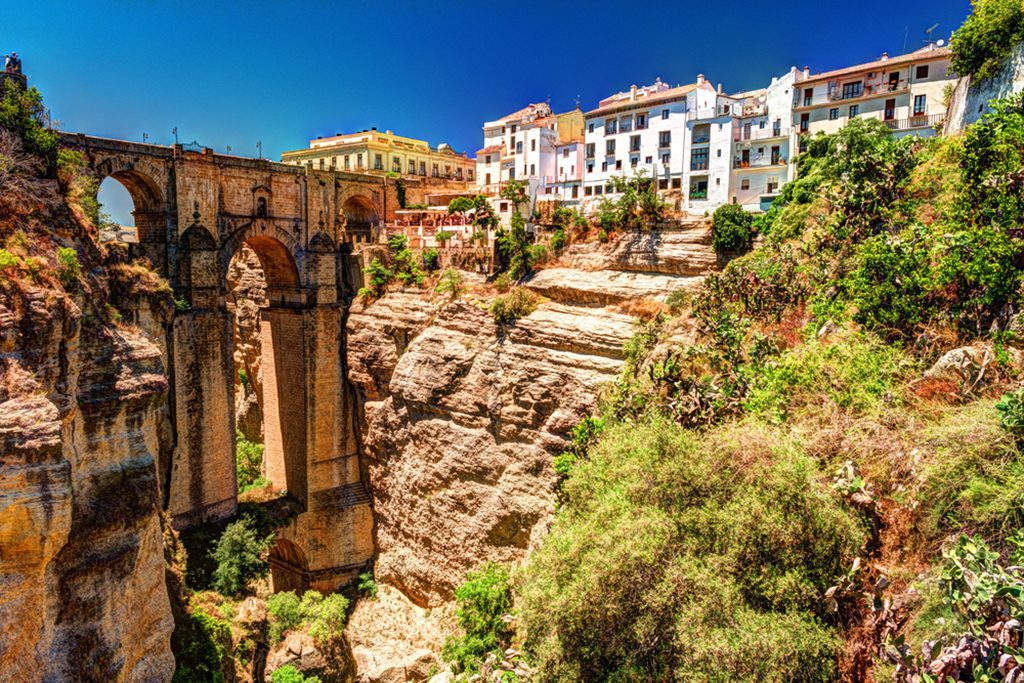Spain is one of the top vacation spots in Europe, thanks to its stunning beaches, mouthwatering food, exciting nightlife, and fun-filled fiestas. The cultural and geographical variety of Spain is unparalleled on the European continent as a whole due to the inclusion of various autonomous regions and islands. Spain is a country of striking contrasts, from the exotic beauty of the Canary Islands to the northern uniqueness of the Basque Country to the southern Costa del Sol beach resorts and the Sierra Nevada mountain range.
Barcelona, with its Gothic Quarter, unique architecture, magnificent beaches, and the world’s biggest football stadium, and Madrid, with its Royal Palace, dazzling plazas, and active nightlife, are two of the most visited cities in Spain. Andalusia is home to several exciting cities, including Seville, Cordoba, and Granada.
Picking one location as a base and making day trips to major places is suggested since it is difficult to see all of Spain’s amazing sights in a single holiday. The Sagrada Familia in Barcelona, Antonio Gaudi’s unfinished masterwork, and the Palacio Real in Madrid, the sumptuous residence of the Spanish Royal family, are two of the most popular tourist destinations in Spain.
Spain is more diverse than common perception would have you believe, stretching from the Atlantic to the Mediterranean and the Pyrenees in between. This Iberian country is more than just paella and bullfighting. There is a far greater diversity of culture in Spain than you might think.
Explore the Catalan culture of Barcelona and its surreal architecture by Antoni Gaud. In the northwest, you can sample pintxos, the Basque version of tapas, while in the south, you can see the influence of the Moors on the architecture of Andalusia.
Furthermore, there is a great deal more. And it doesn’t even account for the world-famous Costas beaches! The amazing Roman remains found all across the country, notably in Segovia with its aqueduct. You can get your fill of culture, delicious cuisine, and vitamin D from the abundant sunshine. Use our recommended Spain tourist destinations to help you organize your vacation to this Mediterranean paradise.
17. Merida
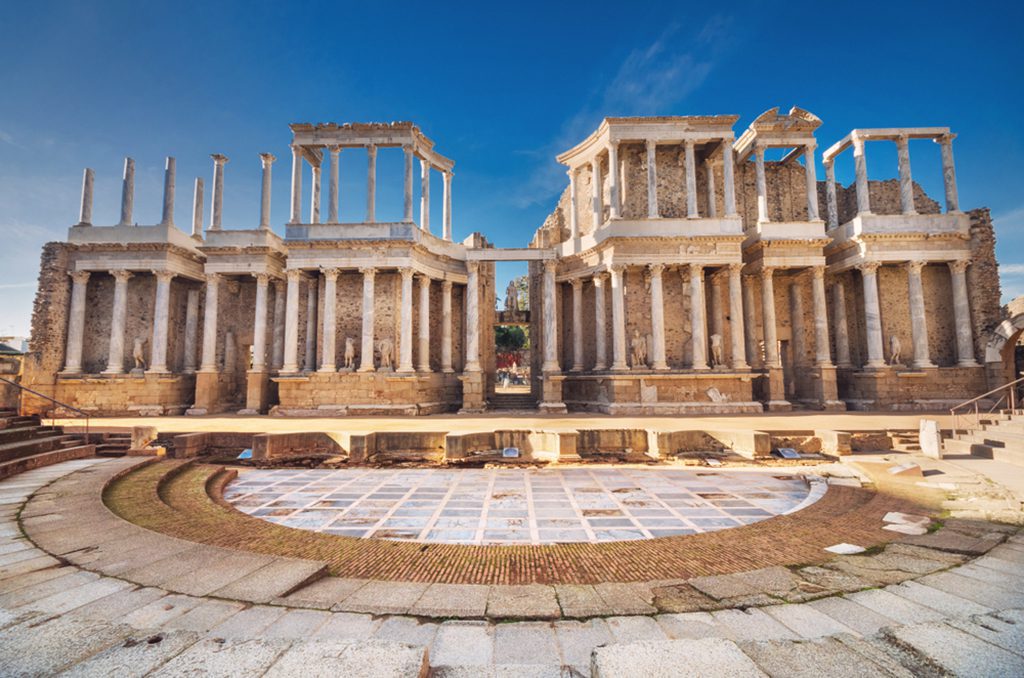
Merida, founded in 25 AD by the Romans, is home to some of Spain’s most spectacular and well-preserved old ruins. The city is located in the western, central portion of the Iberian Peninsula, with the rivers Guadiana and Albarregas passing through it. It is the seat of the autonomous community of Extremadura.
Because of its over 2,000 years of history, it is filled with historical landmarks and archaeological sites. The ancient Roman Theater is the most impressive of all, and it is still used to this day for flamenco shows and other forms of theatrical performance.
In addition to this, the Romans left behind a bridge, an aqueduct, and a hippodrome, all of which have survived in remarkable condition. Moreover, the city is home to many beautiful Baroque and Gothic churches and several museums that detail its long and eventful past.
16. Bilbao
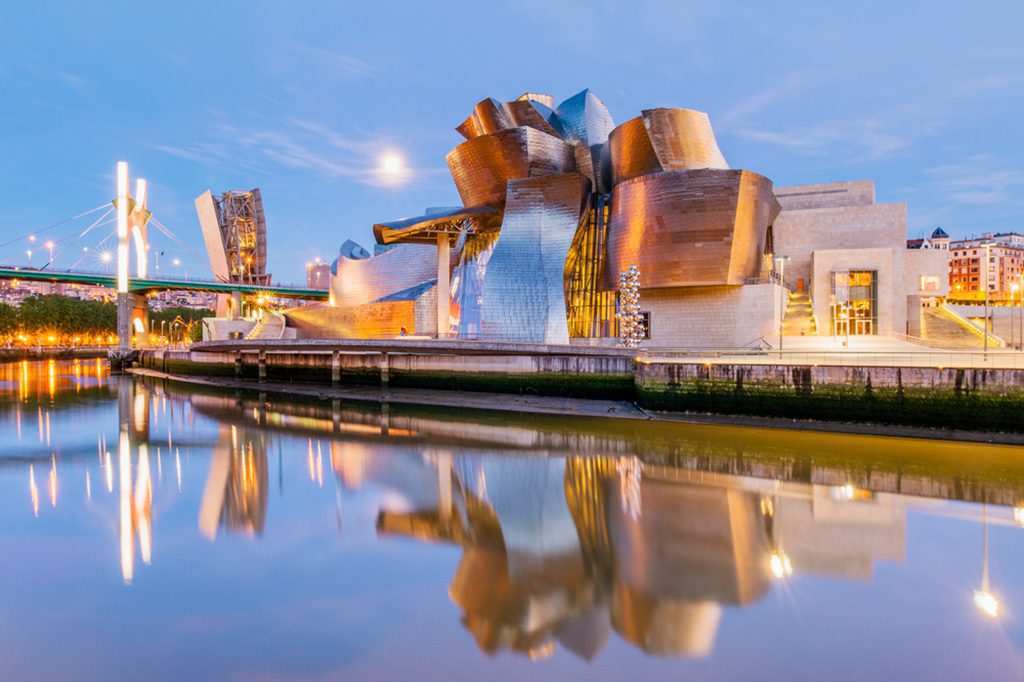
Located on an estuary about 16 kilometers south of the Bay of Biscay, Bilbao is the biggest city in Spain’s Basque Country. The city’s parks and riverbanks, as well as the surrounding hills, are lush and green because of the city’s warmer and wetter climate compared to the rest of the country.
Until the Guggenheim Museum was built in the 1990s, Bilbao in northern Spain was recognized mostly as a major port and industrial center. Since then, Vizcaya’s capital city has seen a surge in visitors, which has bolstered the local economy and helped revitalize the area’s numerous previously unnoticed attractions.
The Guggenheim Museum, long regarded as one of the most significant buildings ever constructed, has become a beacon for visitors to Bilbao. This vast, interconnected structure is dedicated to modern and contemporary art and has a colossal abstract sculpture that mimics ship outlines and shimmering fish scales to evoke a marine theme.
The Basilica of Begoa and the Gothic Cathedral of Santiago, both built in the 14th century, are both worth seeing while in Bilbao. The Alhondiga, a multi-use building first constructed in 1909 and recently renovated, has a library, dining options, and a swimming pool with a glass bottom.
5. Salamanca
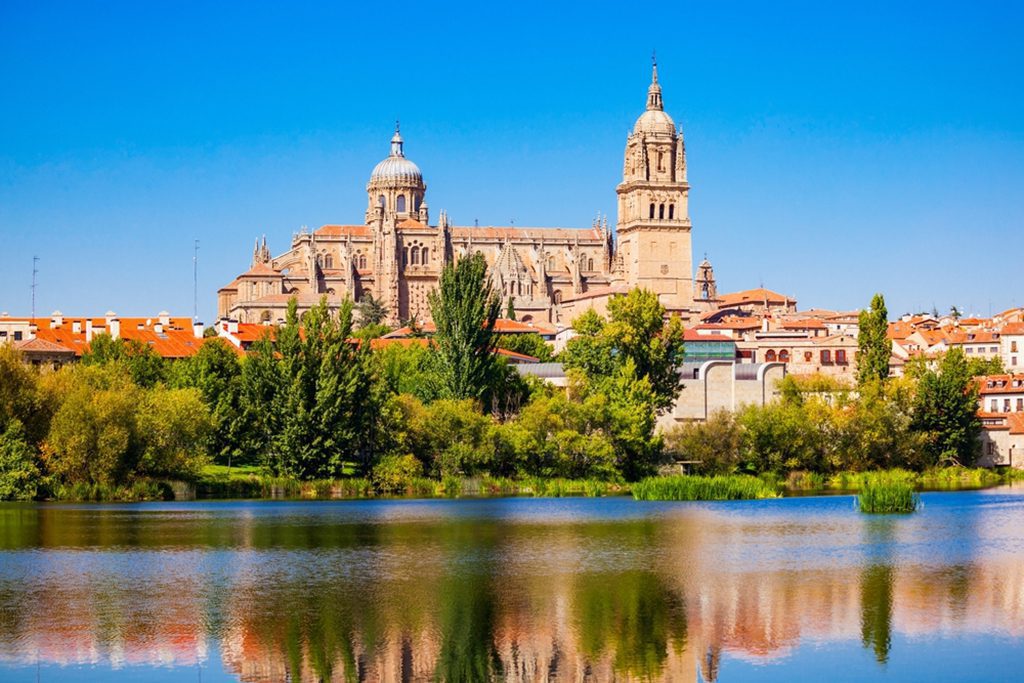
Salamanca, the provincial capital and biggest city, is located on the Northern Plateau of Spain on the banks of the Tormes River. The historic downtown is packed with architectural gems and stunning monuments from ages past, earning it a reputation as one of Europe’s most attractive Renaissance cities.
The Plaza Mayor is the heart of the city, surrounded by shops, restaurants, and nightlife. At night, when the grand structures are lighted up, a mystical quality is added to the spacious and exquisite square.
The New and Old Cathedrals, two examples of outstanding architecture, are located nearby. In keeping with the sandstone architecture of the rest of the city, these structures are also made of the same material. Salamanca’s name, “The Golden City,” comes from the city’s golden architecture and streets.
Despite the city’s rich history, Salamanca radiates a sense of vitality and vigor because of its high student population. The University of Salamanca is one of the oldest academic institutions in Europe, having been established in 1218.
14. Cuenca
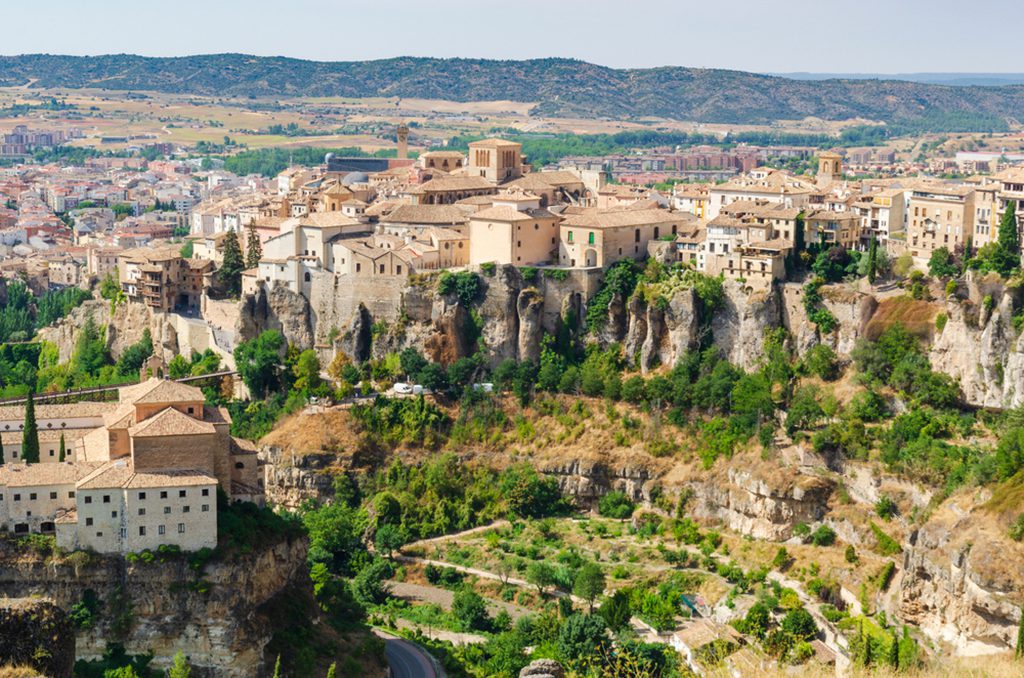
Cuenca, a major tourist destination in Spain’s Castilla-La Mancha area, is on a narrow peninsula at the confluence of two steep river gorges. Because of its strategic location, it was battled over, conquered, and governed by both Muslims and Christians, with Napoleon putting his stamp on it in the early 1800s.
This makes it an interesting place to visit since the medieval old town is home to several ancient churches, a cathedral, and a castle. The walls of its many contemporary art museums and galleries are covered in bright colors and bold patterns, in contrast to the soft tones used to paint the city’s lovely structures.
Casas colgadas, or “hanging houses,” are a distinctive feature of Cuenca, a picturesque city located on a cliffside. These magnificent structures are not just technical marvels but also great photo ops, especially when seen from the San Pablo Bridge.
13. Ibiza
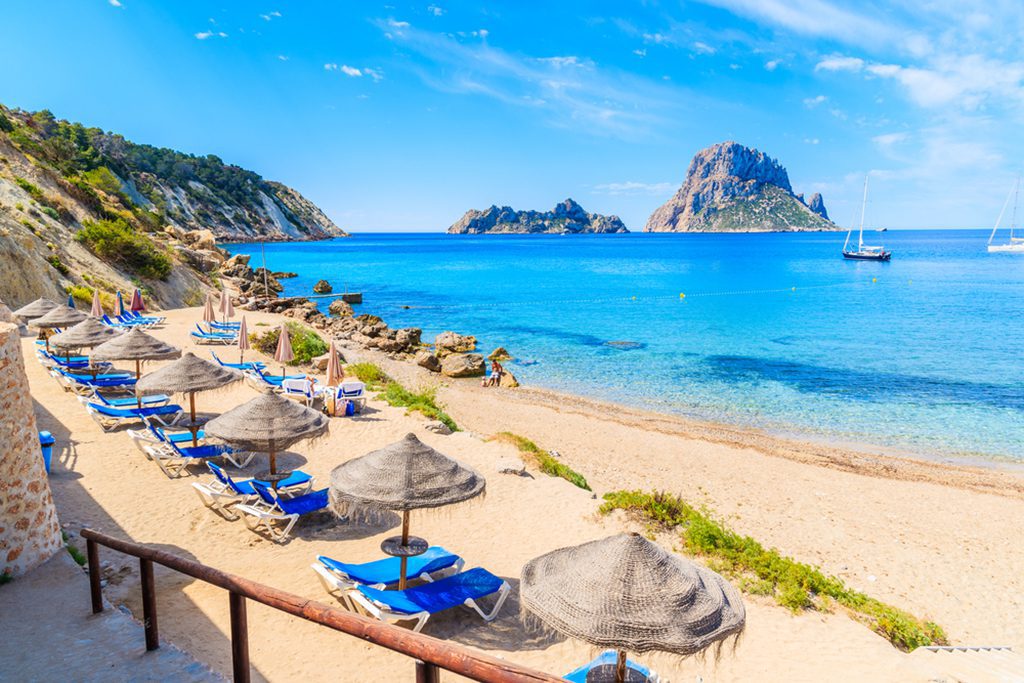
Located in the Mediterranean Sea off the coast of Spain’s easternmost province, Ibiza is the third-biggest of the Balearic Islands. There are numerous facets to the island beyond its reputation for pulsating nightlife and a summer club scene that draws internationally known DJs.
Ibiza is a terrific place to go for a beach vacation because of its warm, sunny weather and stunning bays and beaches, despite the island’s rocky and rough appearance. Ibiza Town, the island’s capital, is situated on a hillside above the ocean and has a magnificent walled old town.
The island’s spectacular party scene and explosive electronic dance sets are why many people go to Ibiza, but there are also plenty of quiet rural getaways and tranquil seaside villages. The summertime clubs there are always packed, and they don’t close until the sun rises over the water.
12. Segovia
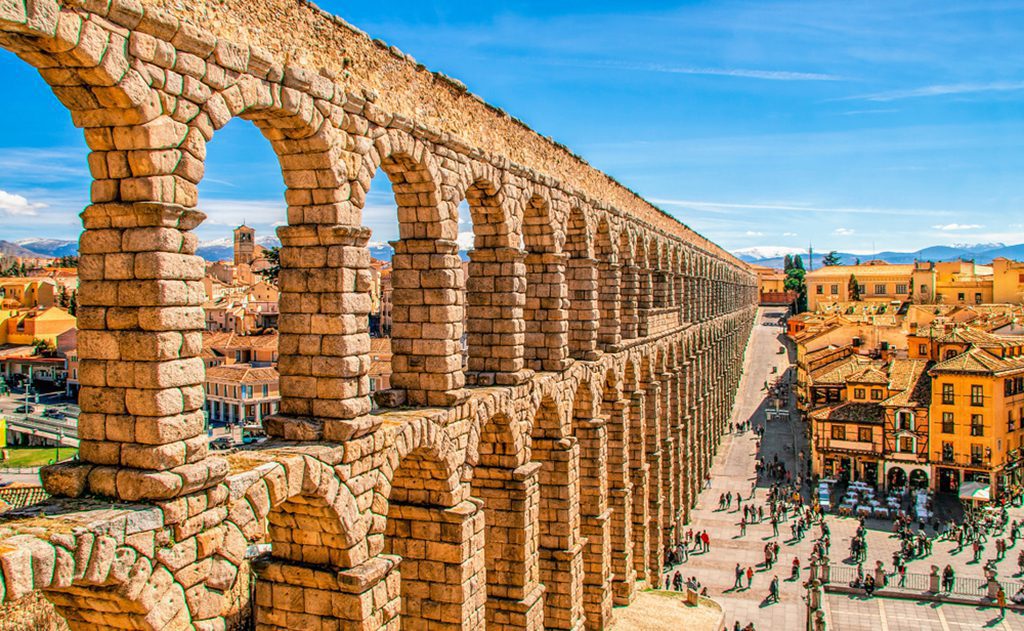
Segovia, the main city and provincial capital of its namesake province, is located in a beautiful valley with the Sierra de Guadarrama mountains as a backdrop. On the Inner Plateau of Spain, between Valladolid and Madrid, you’ll find this city with sun-drenched streets that span the Eresma River.
Segovia’s historic landmarks have made it a tourist hotspot. The Aqueduct of Segovia, constructed by the Romans in the first century AD, can be seen inside the city’s fortified Old Town. Nearby is a huge and beautiful Gothic cathedral, as well as several churches, convents, and monasteries; they, together with the engineering wonder, serve as the city’s icon.
The Alcazar of Segovia is another must-see, perched on a rocky outcrop above the city. It was formerly a favorite royal residence of the Kings of Castille, and its impressive design is said to have served as inspiration for Walt Disney’s Sleeping Beauty Castle.
11. Ronda
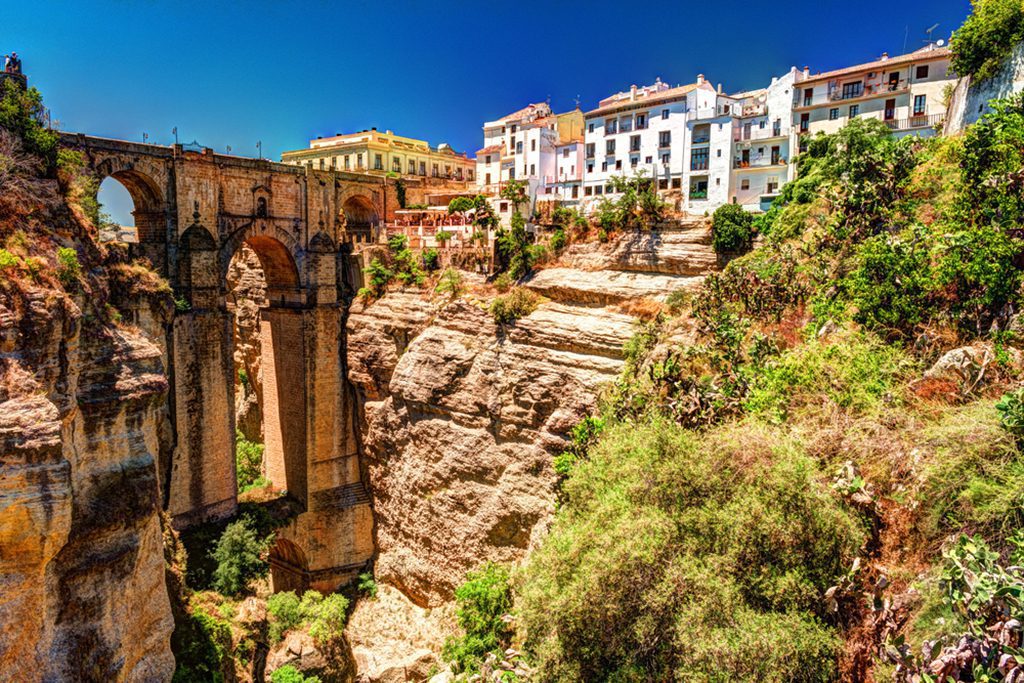
Ronda, in the south of Spain, has one of the most breathtaking locations conceivable, perched atop a cliff overlooking the valleys and hills below it on both sides of the dramatic El Tajo gorge.
The Puente Nuevo Bridge, the city’s most recognizable feature, was constructed over the canyon in 1793. El Ciudad, the historic Moorish neighborhood, is home to spectacular churches, gorgeous palaces, and attractive gardens. The contemporary El Mercadillo district is connected to El Ciudad by a magnificent bridge. The town’s neoclassical bullring is the oldest in Spain, and the town itself is sometimes credited as the birthplace of contemporary bullfighting in Spain.
Writers and poets have always been attracted to Ronda’s ancient streets because of the city’s rich cultural legacy and history, as well as its stunning clifftop backdrop.
Ronda is one of the most famous and scenic towns in Andalusia, and it has attracted the likes of Ernest Hemingway, James Joyce, and Rainer Maria Rilke in the past.
10. Santiago de Compostela
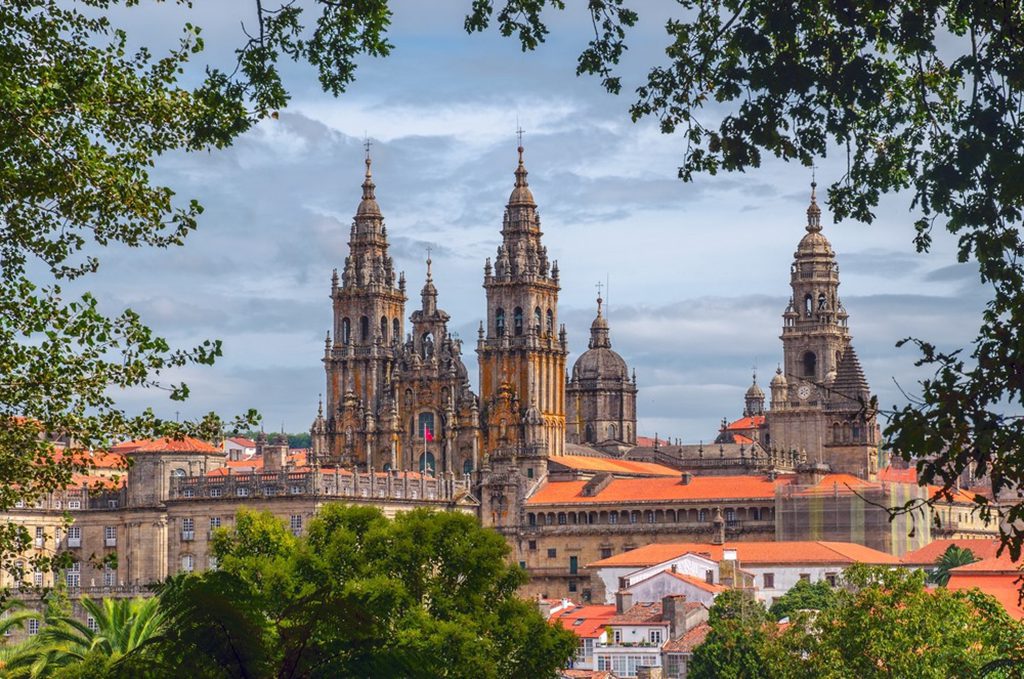
Santiago de Compostela, the capital of the Galicia region in northwest Spain, is well-known as the finish line of the traditional pilgrimage known as the Camino de Santiago. This pilgrimage, which dates back to the Middle Ages and is revered by many since it is claimed that St. James the Apostle is buried at Santiago de Compostela, goes by another name: the Way of St. James. The city’s rich religious heritage and cultural traditions draw thousands of tourists each year.
Most visitors will first enter the city via the Praza do Obradoiro. This busy square is home to several of the city’s most notable buildings, including the Santiago Cathedral, which houses the tomb of St. James. The Gelmrez Palace, Rajoy Palace, Catholic Kings Hostal, and San Jeronimo College are among the noteworthy structures in this area.
You can discover everything about the Camino de Santiago and its importance at the Pilgrimage Museum, while the culture and history of the Galician people are on display at the Museum of the Galician People.
9. Toledo
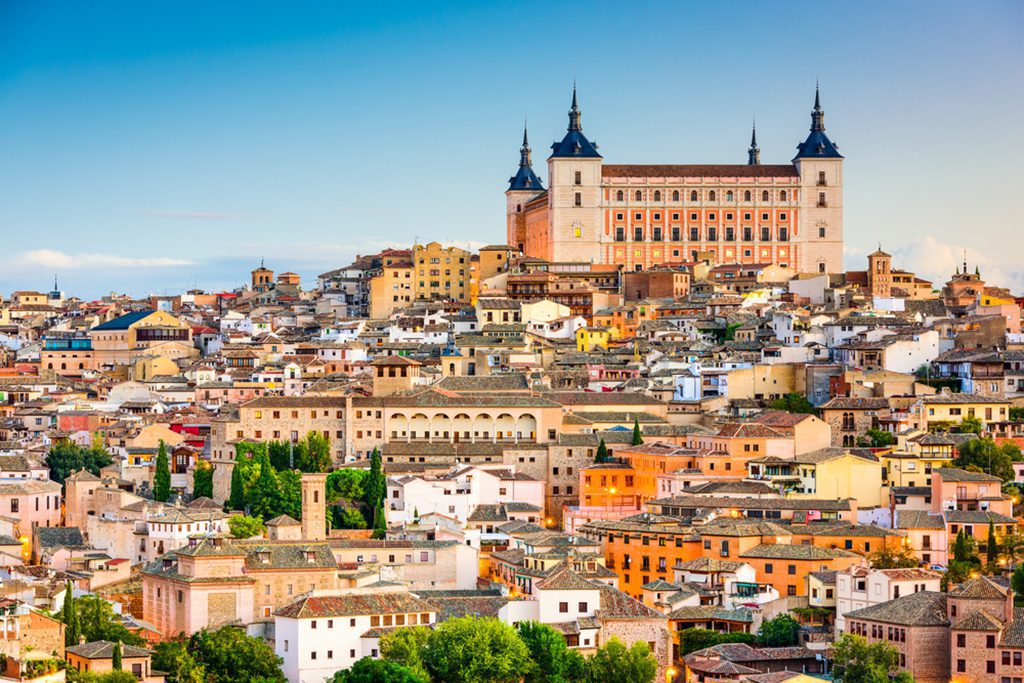
Toledo, located on a mountain in central Spain, was the capital of Spain for more than a century, from the 14th to the 16th centuries. The city has earned the nickname “City of Three Cultures” due to the long-term presence of Jewish, Christian, and Muslim residents. The historic art and architecture of Toledo, some of which dates back to the Roman Empire, has made it a popular tourist destination in recent years.
Toledo is best explored on foot, where you can get lost in its maze of medieval streets and marvel at its amazing old Roman fortress and other ancient buildings.
The Zordocover Plaza, scene of several significant events, is interesting to explore and has many convenient stores. You can take a break from sightseeing at one of the charming cafés in the area and try some of the regional delicacies, such as the almond and pine-nut dessert Mazapan. Pre-dinner cocktails and tapas are available at local bars in the evenings.
Toledo, the birthplace of the famous Spanish painter El Greco, is now a thriving cultural center. Many world-renowned artists, including Goya, Rafael, and Titian, are represented in the Cathedral of Toledo’s extensive art collection. Many of the city’s churches and other attractions have works by El Greco.
8. Cordoba
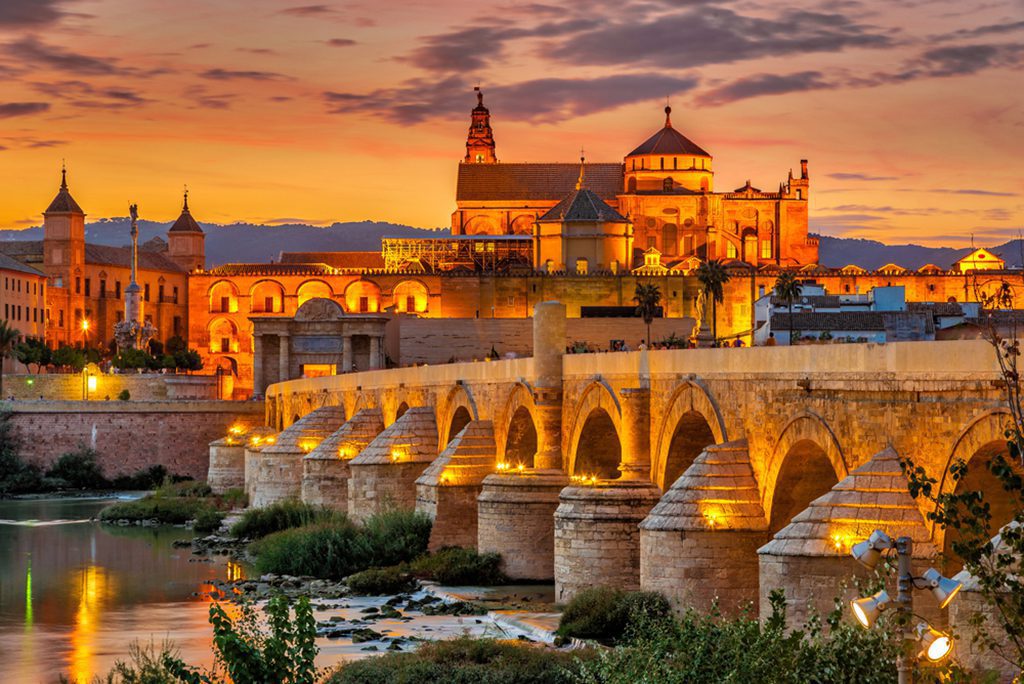
Cordoba, in southern Spain’s Andalusia region, is the provincial capital. Cordoba is a medium-sized city with all the historic and cultural features of a major city, yet it retains the quaint atmosphere of a smaller town.
Cordoba’s historic district is a labyrinth of narrow medieval streets, plazas, and whitewashed courtyards centered on the Mezquita, making it one of the oldest towns in Europe. The Mezquita was originally constructed as a mosque, but now it stands as a magnificent cathedral. Its Islamic-style red and white striped arches are a reminder of Córdoba’s historic splendor. The orange orchard just outside the Mezquita is a lovely spot to relax.
The Old Jewish Quarter, with its lovely patios and gift stores, and the Fortress of the Christian Monarchs are well worth seeing. Many of Cordoba’s buildings date back to when it was a Roman colony, including the city’s original walls, gates, bridge, amphitheater, and mausoleum.
A wide variety of museums, theaters, restaurants, hotels, and bars can be found in the city’s many plazas. Although Cervantes’ Don Quixote is often linked with the Plaza del Port, the Plaza de las Tendillas is the place to go for a bustling retail district.
In May, Cordoba has three exciting festivals: the May Crosses Festival, the Patios Festival, and the Codoba Fair. The city’s plazas and courtyards are decked out for these celebrations, and the streets come alive with competitions, flamenco dance, and traditional food and drink.
7. San Sebastian
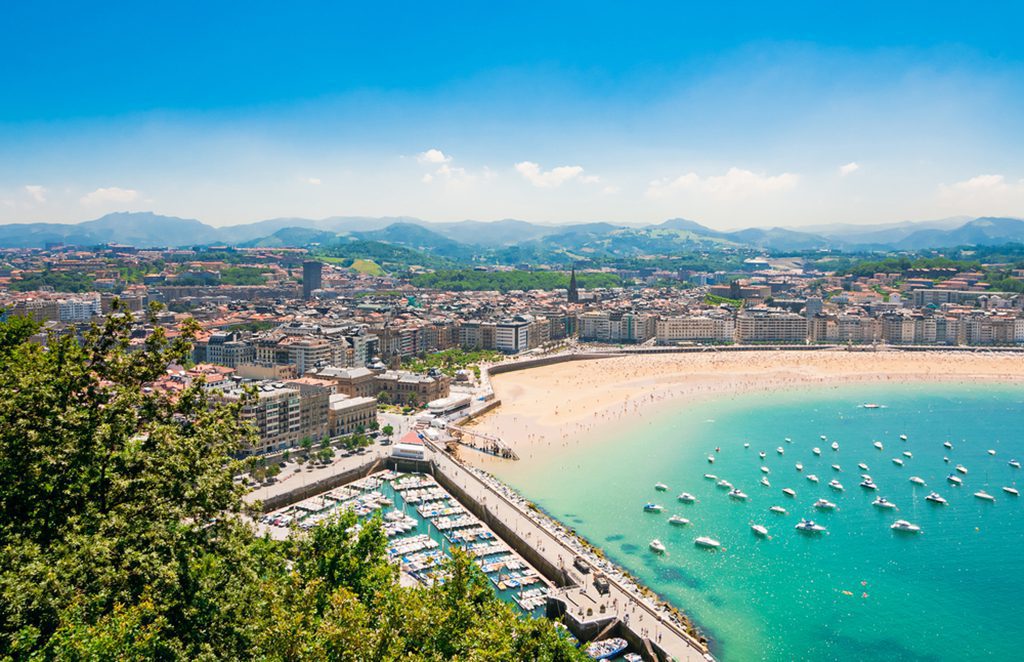
The city of San Sebastian serves as the provincial capital of Gipuzko in the Basque region of northern Spain, on the shores of the Bay of Biscay. This picturesque port is renowned for its delectable cuisine and relaxing beaches.
San Sebastian is a small, pleasant city with restaurants, pintxo bars, designer stores, and an enclosed mall, despite being split into numerous districts. After the city was virtually destroyed during the Napoleonic Wars, it was rebuilt in the 19th century, and many of its historic structures can be seen in the Old Town.
Playa de la Concha, the most well-known of San Sebastian’s beaches, is a great place to relax in the sun and enjoy water sports like swimming, kayaking, and water skiing. You can rent a surfboard or a bodyboard at Playa de la Zurriola, which is a popular spot for surfers.
Monte Urgell and Mount Igueldo, two tall hills above the city, have hiking trails, funicular rides, amusement parks, outstanding monuments, and breathtaking panoramas.
Pinch-os from San Sebastian are famous throughout Spain. Pintxos are little appetizers that can be made with a broad range of fresh ingredients. A variety of these pintxos can be found at the bar’s buffet at several of the city’s establishments. The tradition in this area is to go from bar to bar, enjoying a couple of pintxos and a glass of wine or beer at each stop.
The city has a slew of annual celebrations and events. The San Sebastian Film Festival and the San Sebastian Jazz Festival are the most popular events and draw the most numbers.
6. Valencia
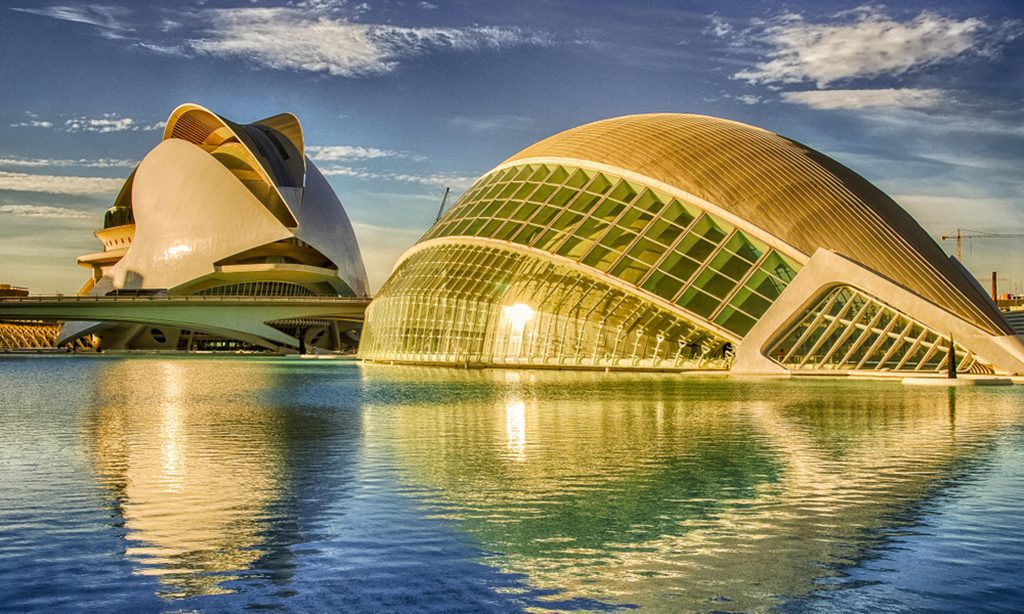
Valencia, one of Spain’s biggest and most significant cities, is situated in the Valencia area in the country’s eastern half. Major building and redevelopment in Valencia have resulted in the city’s two most well-known attractions: the Fallas Festival and the City of Arts and Sciences.
In addition to the Silk Exchange Market, which is on the site of an ancient silk trading hub, Valencia is brimming with beautifully restored medieval structures.
The city’s most notable landmark is the City of Arts and Science, a vast cultural and entertainment complex built by rerouting the Turia River. There are a number of architectural masterpieces housed inside this complex, including a planetarium, aquarium, art gallery, and an IMAX cinema. The former course of the Turia River has been transformed into scenic gardens, sports areas, and man-made lakes.
The Barri del Carme is a hip area of Valencia known for its unique buildings, wide range of resident nationalities, and abundance of fashionable stores and outdoor cafés.
At the Fallas Festival, held annually in Valencia, papier-mâché figurines of different shapes, sizes, and colors are proudly displayed for a whole week. The week culminates with the ceremonial burning of the “fallas” and all-night celebrations in the participating settlements. Of course, March isn’t the only month where Valencia throws a good party. The city comes alive at night with bars and clubs that are always packed.
5. Seville
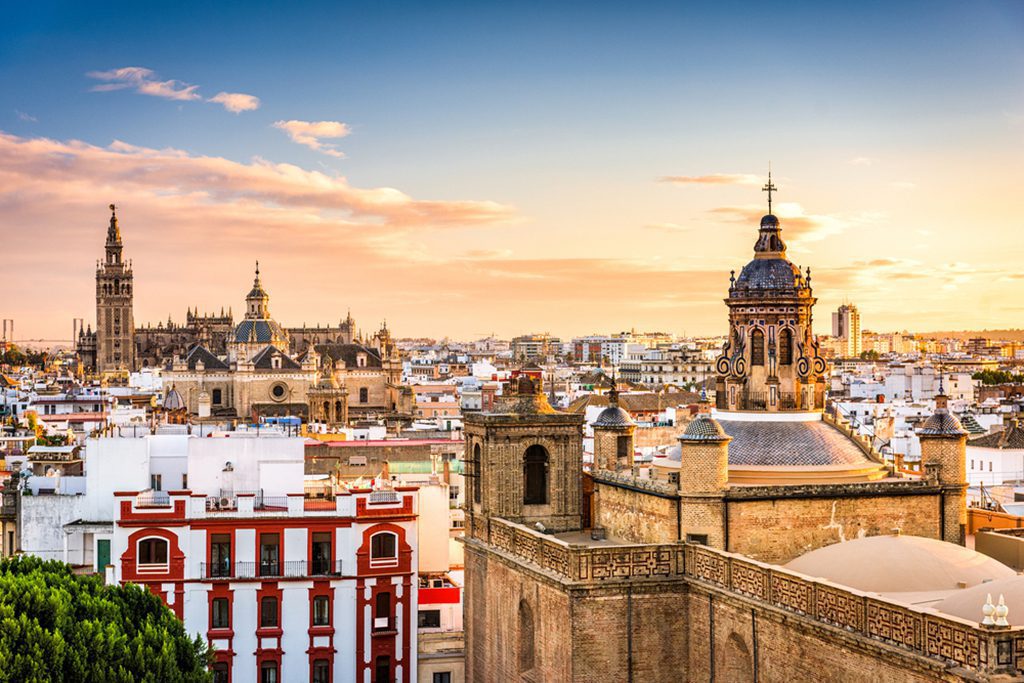
Seville is the go-to spot for tourists in southern Spain due to its abundance of world-class attractions, exciting festivals, and vibrant nightlife. Seville is the cultural and economic center of Andalusia as well as the region’s capital.
The majestic Cathedral of Seville, where it is widely believed that Christopher Columbus is buried, is only one of the many stunning and historically significant structures to be found in Seville. The Real Alcazar is another important structure; it is a Moorish palace with lavish gardens and the area where Christopher Columbus planned his trip to the New World.
The Metropol Parasol, built like a big umbrella and holding the city’s central market, is the largest wooden structure in the world.
Seville, being the region’s cultural epicenter, is home to a wide variety of museums, art galleries, and other forms of entertainment. Seville’s districts come alive with bars, nightclubs, and flamenco dance halls after the sun goes down.
One of Spain’s best-known festivals takes place annually in Seville: the April Fair. During this time, the streets of the city are taken over by revelers enjoying the city’s centuries-old traditions, including flamenco dance, bullfights, and a wide variety of local foods and drinks.
4. Madrid
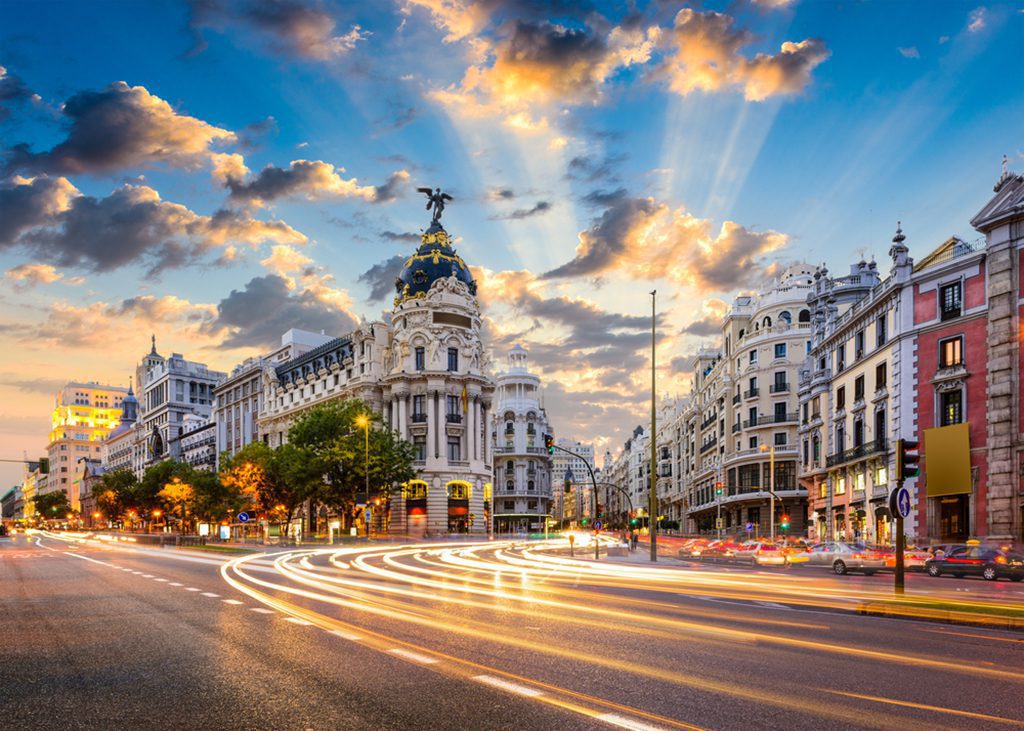
Madrid, the largest and capital city of Spain, is famous for its lively nightlife. The city is a melting pot of cultures because of its many educational institutions, making it one of Europe’s most vibrant cities.
You can see both old and new styles of architecture in Madrid, and they all work together to create a stunning cityscape. Historic districts, elder communities, university neighborhoods, ethnic enclaves, and vibrant nightlife districts are just some of the many neighborhoods that make up the country’s capital.
Puerta del Sol is the city’s centerpiece and a major transit hub, in addition to being the site of several festivals, significant public assemblies, and entertaining street entertainers. Plaza Mayor is another significant area, famous for its abundance of gift stores, cafés, and the bustling San Miguel Market.
Most of Madrid’s most prominent tourist sites, including the Royal Palace, the official house of the King of Spain, and a multitude of spectacular churches and ancient structures, are clustered together in the heart of the city. Beautiful parks and zoos, football matches, museums, art galleries, and concerts are just a few of the activities that can be experienced in Madrid.
3. Mallorca
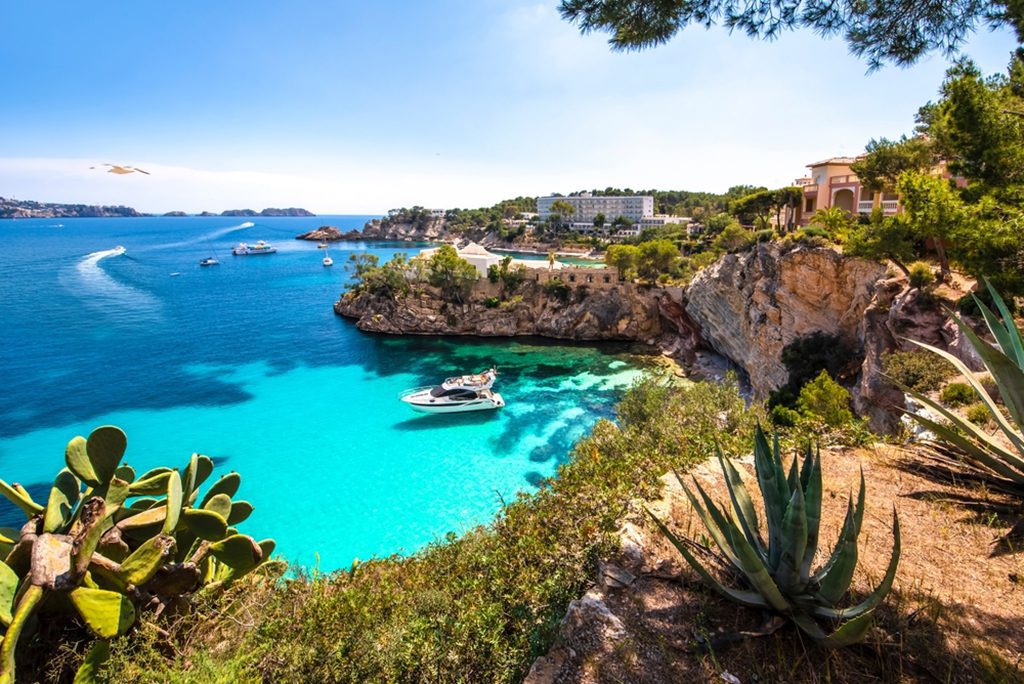
Mallorca, the biggest of Spain’s Balearic Islands, is fringed by the crystal-clear waters of the Mediterranean and has dramatic cliffs, hidden coves, and stunning beaches. The island’s pleasant temperature and abundant, breathtaking landscape have made it a favorite vacation spot for decades.
Mallorca’s magnificent coastline is lined with seaside towns and resorts, while its hilly interior is home to ancient hilltop monasteries and peaceful villages. Popular activities include sunbathing, swimming, and watersports, and the local cuisine and fish are outstanding.
Palma de Mallorca is the island’s capital and largest city. Visitors can wander the charming streets of the old town, which sits under a stunning Gothic cathedral. Soller, with its picturesque, isolated environment, and Valldemossa, the attractive mountain village, are both well worth a visit.
2. Barcelona
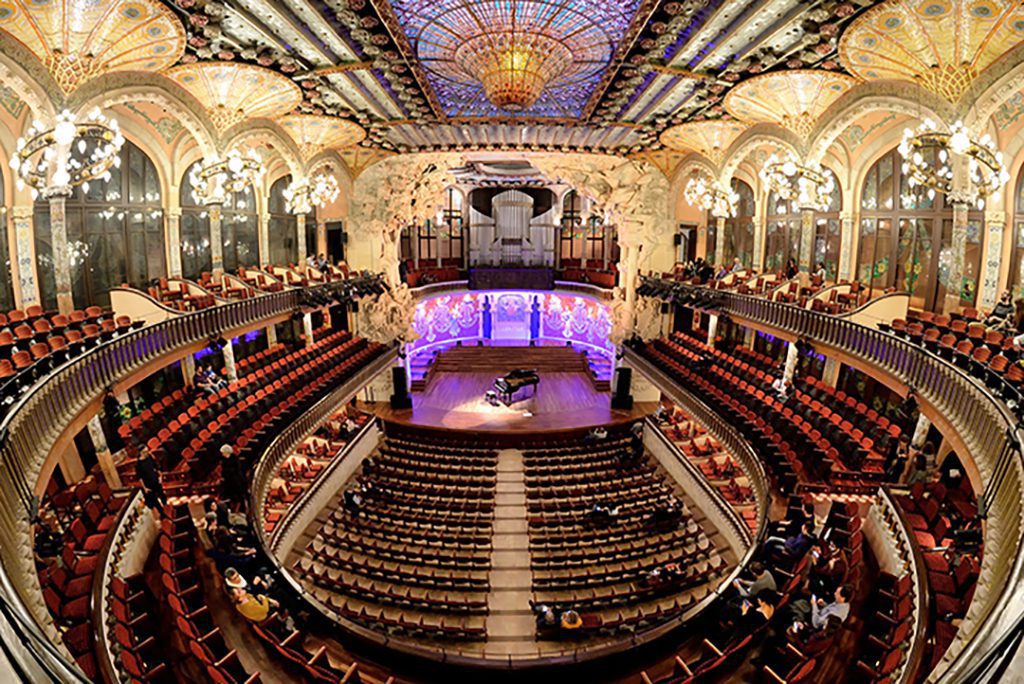
Barcelona, a city in northern Spain, is a popular tourist destination because it has everything a visitor might want in a European city, from ancient architecture to exciting shopping to fascinating cultural events to a pulsating nightlife.
Barcelona’s Old City, Ciutat Vella, is the city’s most visited landmark. The Gothic Quarter attracts visitors with its historic buildings and architecture, as well as its Roman remains and pedestrian-friendly streets dotted with cafés and restaurants.
La Placa Catalunya is a public square in the heart of Barcelona that serves as a transit hub and is surrounded by sculptures and fountains. Barceloneta is one of Barcelona’s most famous beaches, and taking a walk down La Rambla, a pedestrian thoroughfare surrounded with trees, is another favorite pastime.
The Sagrada Familia and Casa Batllo, two of Antoni Gaudi’s most renowned works, are among Barcelona’s most distinctive landmarks. Both of these amazing buildings combine various forms, colors, and patterns in unique ways.
Barcelona, being a hub of art and culture, is home to several museums, galleries, theaters, and flamenco performances. The city is also home to a variety of festivals, notably the massive electronic music celebration Monegros Desert Festival. Barcelona has a rich sporting history, and the city is now home to the world’s biggest football stadium.
One of Barcelona’s most popular attractions, Montserrat, is located on the outskirts of the city. Secret caverns, an underground lake, and the Black Madonna can all be found in Montserrat, which can be reached by hike, rail, or cable car.
1. Granada
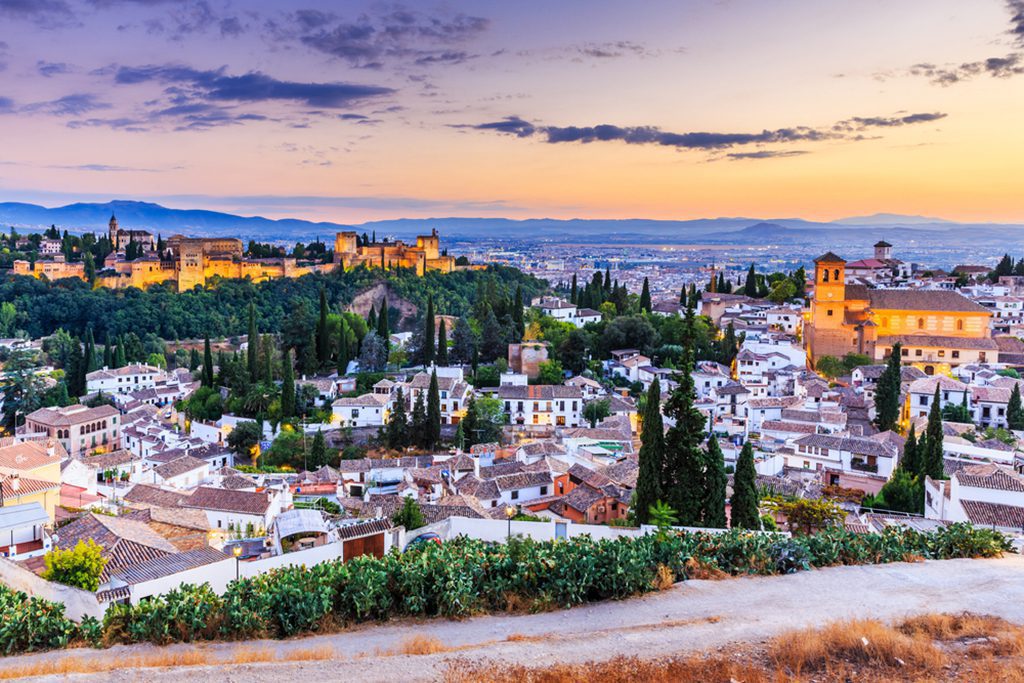
Granada is the capital of its namesake province and is at the foot of the Sierra Nevada Mountains in southern Spain. Despite its relatively modest size, the city of Granada has a vibrant nightlife, a rich cultural heritage, and a wide variety of stunning sights. In addition, the Alhambra, a masterpiece of Moorish architecture that represents Andalusian culture, can be found there.
The city’s most renowned features are the Alhambra, a vast Moorish palace with sumptuous gardens and Arab baths, and the Granada Cathedral, with its spectacular domed ceiling from the 16th century.
Sacromonte and Albaicin, two distinct areas of Granada, embody the spirit of the city. Sacromonte, famous for its Christian monastery, attracts visitors interested in learning about the nomadic lifestyle of flamenco and zambra dancers and seeing authentic gypsy cave houses.
In the heart of the historic Arab quarter of Albaicin is the century-old Spice Market. Here, in the midst of Moorish buildings, cobblestone streets, and bright bougainvillea, a plethora of merchants offer anything from vibrant tapestries and wall hangings to exotic teas and spices.
Nevada Ski Station is just outside the city and provides a broad variety of winter and summer sports such as skiing, sledding, mountain climbing, horseback riding, and cable car rides.
Locals spend their nights bar-hopping, enjoying tapas and beverages before taking in one of the city’s many performances.


